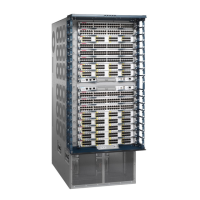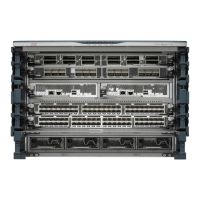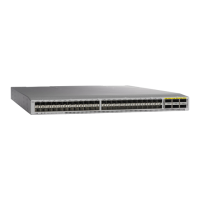Send document comments to nexus7k-docfeedback@cisco.com.
7-16
Cisco Nexus 7000 Series NX-OS Unicast Routing Configuration Guide, Release 4.x
OL-20002-02
Chapter 7 Configuring OSPFv3
Configuring Basic OSPFv3
Use the no router ospfv3 command to remove the OSPFv3 instance and all associated configuration.
Note This command does not remove OSPF configuration in interface mode. You must manually remove any
OSPFv3 commands configured in interface mode.
You can configure the following optional parameters for OSPFv3 in router configuration mode:
Use the address-family ipv6 unicast command to configure the following optional parameters for
OSPFv3 in address family configuration mode:
Step 4
show ipv6 ospfv3
instance-tag
Example:
switch(config-router)# show ipv6 ospfv3
201
(Optional) Displays OSPFv3 information.
Step 5
copy running-config startup-config
Example:
switch(config)# copy running-config
startup-config
(Optional) Saves this configuration change.
Command Purpose
Command Purpose
no router ospfv3
instance-tag
Example:
switch(config)# no router ospfv3 201
Deletes the OSPFv3 instance and all associated
configuration.
Command Purpose
log-adjacency-changes [detail]
Example:
switch(config-router)#
log-adjacency-changes
Generates a system message whenever a neighbor
changes state.
Command Purpose
distance
number
Example:
switch(config-router-af)# distance 25
Configures the administrative distance for this
OSPFv3 instance. The range is from 1 to 255. The
default is 110.
maximum-paths
paths
Example:
switch(config-router-af)# maximum-paths 4
Configures the maximum number of equal OSPFv3
paths to a destination in the route table. The range
is from 1 to 16. The default is 8. Used for load
balancing.

